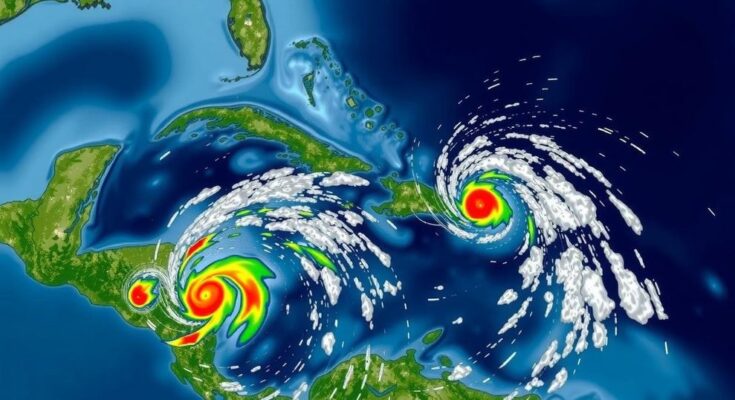Tropical Storm Rafael is moving through the Caribbean and may impact the U.S. Gulf Coast this weekend. It is expected to strengthen into a hurricane as it approaches Cuba, bringing heavy rain and winds. The storm’s effects on the Gulf Coast are uncertain, with different models predicting varying impacts.
Tropical Storm Rafael is currently advancing through the Caribbean and is anticipated to affect the U.S. Gulf Coast this upcoming weekend. On Tuesday morning, the storm brought strong winds and heavy rainfall to Jamaica, and it is forecasted to intensify into a hurricane by Tuesday night as it approaches the Cayman Islands. By Wednesday evening, Rafael is expected to make landfall in Cuba as a Category 1 hurricane, potentially causing mudslides and destructive winds across the island. On Thursday morning, the peripheral bands of the storm are likely to skirt the Florida Keys, resulting in additional gusty winds and significant rainfall. A tropical storm watch has already been issued for that region. The storm is predicted to decelerate and weaken in the Gulf of Mexico by Friday morning. However, the precise impact Rafael may have on the Gulf Coast remains uncertain, with forecast models presenting varying outcomes; some suggest Rafael may bring substantial rainfall, while others indicate a diminishing storm potentially heading towards Mexico.
Tropical Storm Rafael represents an ongoing weather event within the context of the Atlantic hurricane season, which runs until November 30. This period is characterized by an uptick in tropical storm activities affecting Caribbean nations and the southeastern United States. As weather patterns evolve, it is crucial to monitor developments, especially since storms can intensify rapidly, resulting in substantial rainfall, high winds, and potential flooding, which pose risks to both land and sea operations.
In summary, Tropical Storm Rafael is currently traversing the Caribbean and is set to impact the Gulf Coast this weekend. As it transitions to a hurricane while approaching Cuba, it poses risks of mudslides and damaging winds. The storm’s trajectory and strength in the Gulf of Mexico remain unpredictable, warranting close observation to ascertain any potential effects on the U.S. Gulf Coast. Authorities and residents are encouraged to stay informed and prepared for possible weather changes.
Original Source: abc13.com




